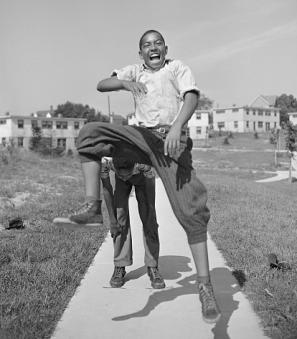The Leo Frank Case
August of 2015 marked the 100th anniversary of the lynching of Leo Frank. Frank, a Jewish factory manager who was accused of strangling 13-year-old Mary Phagan, in the Atlanta pencil factory where they worked. He was found guilty in a case that reached the Supreme Court but -- in the eyes of many -- was prejudiced against him because he was Jewish. The case captivated the nation and had local Washington connections.
In recognition of the anniversary, the Jewish Historical Society of Greater Washington presented a special program on August 18, 2015 in which the Anti-Defamation League’s Washington, D.C., Regional Director David Friedman spoke about the ADL’s fight against anti-Semitism today. JHSGW Special Programs Manager Claire Uziel was kind enough to write a guest post about the Leo Frank case and the JHSGW's event for Boundary Stones. Thanks, Claire!
Have you ever heard of Leo Frank? His case, a lesser known piece of American history, had tremendous long-lasting impact on the nation -- leading to the creation of the Anti-Defamation League and reviving the Ku Klux Klan. There’s also a Washington, D.C. connection.
In 1913, Leo Frank, a young Jewish man originally from New York, was accused of murdering Mary Phagan, a 13-year-old girl who worked in the Atlanta pencil factory he managed. After a month-long trial, with prejudice heavy in the air, Frank was convicted and sentenced to death. Due to the judge’s fear of mob violence, Frank and his family were not in the courtroom when the verdict was announced. Already a national story, the case was featured in The Washington Post, The Washington Herald, and The Washington Times.
After several motions were filed for new trials, Frank’s case arrived at the U.S. Supreme Court in January 1915. A 29-year-old D.C. Jewish attorney, Fulton Brylawski, represented Frank to the Supreme Court. Brylawski, working on behalf of the American Jewish Committee, helped secure a stay of execution while the legal process continued. In April, the Supreme Court rejected the appeal, and Frank’s execution was set for June 22, 1915.
Two days before the scheduled execution, Georgia Governor John Slaton commuted Frank’s sentence to life imprisonment. The next night, Frank was transferred from a county prison to a Georgia State Penitentiary. A month later, a fellow prisoner slashed Frank’s throat – an attack he survived thanks to two prisoners who were doctors.
On the night of August 16, 1915, an angry mob broke into the prison and seized Frank. In the early hours of August 17, he was lynched outside Mary Phagan’s hometown of Marietta, Georgia.
Frank’s wife Lucille, her brother-in-law Alexander E. Marcus, Atlanta Rabbi David Marx, and Frank’s Atlanta attorneys accompanied the body on the train to New York for burial. At 2 a.m. on August 18, 1915, the train arrived at Washington, D.C.’s Union Station where 200 people had gathered. Among them were members of a local B’nai B’rith lodge headed by Rabbi Abram Simon of Washington Hebrew Congregation and civic leader/philanthropist Isaac Gans, who met with Rabbi Marx and Marcus.
In 1986, Frank was granted a pardon. The pardon, based on the State’s failure to ensure Frank’s safety, did not officially clear Frank of the murder.
On the centennial of Leo Frank’s lynching, the Jewish Historical Society of Greater Washington presented a program non August 18, 2015 at the Lillian & Albert Small Jewish Museum. The Anti-Defamation League’s Washington, DC, Regional Director David Friedman spoke about the ADL’s fight against anti-Semitism today.
To read more:
And the Dead Shall Rise: The Murder of Mary Phagan and the Lynching of Leo Frank by Steve Oney, 2003.


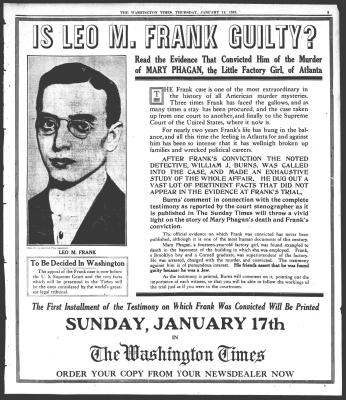
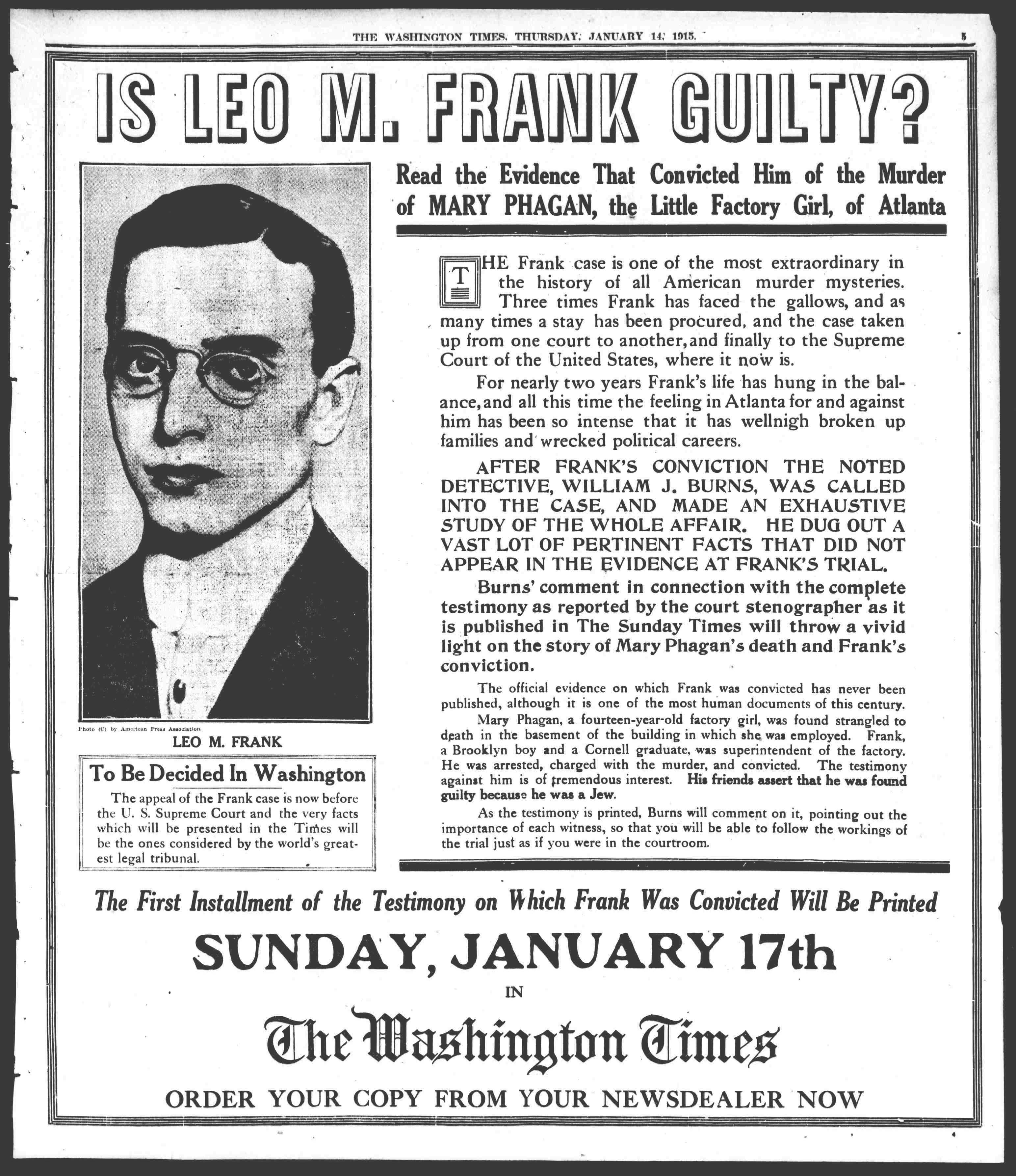

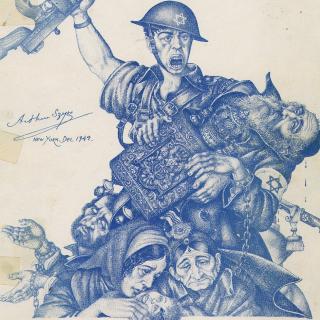
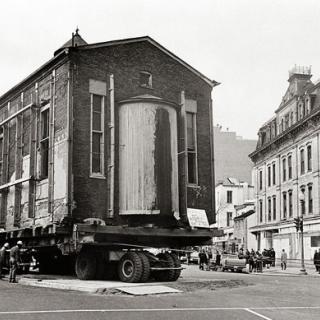
![Sketch of the mythical fuan by Pearson Scott Foresman. [Source: Wikipedia]](/sites/default/files/styles/crop_320x320/public/2023-10/Goatman_Wikipedia_Faun_2_%28PSF%29.png?h=64a074ff&itok=C9Qh-PE1)











